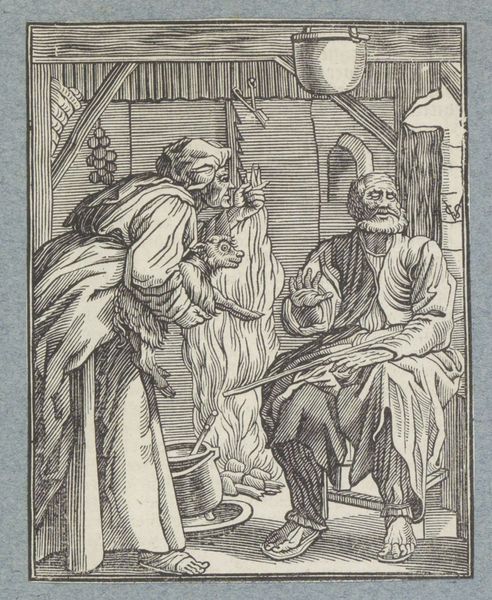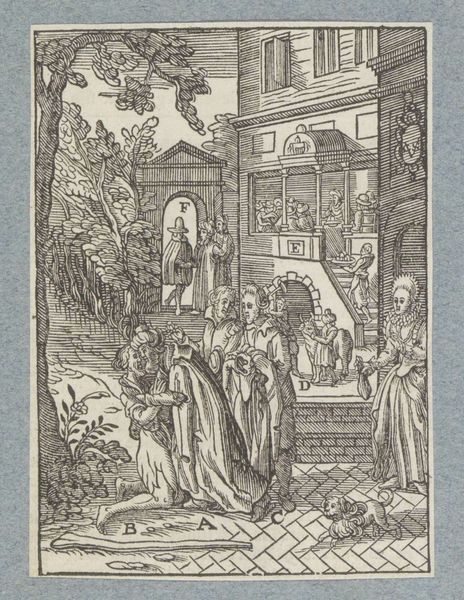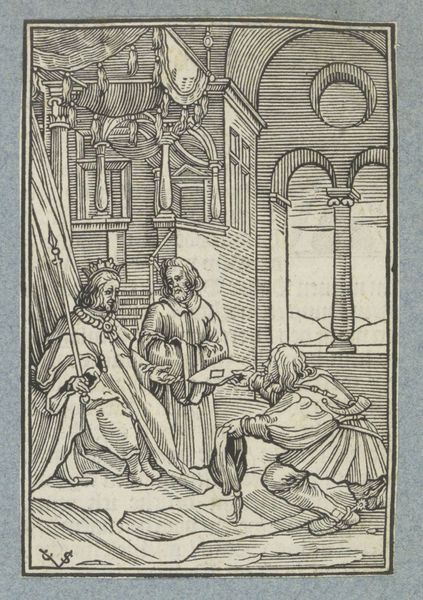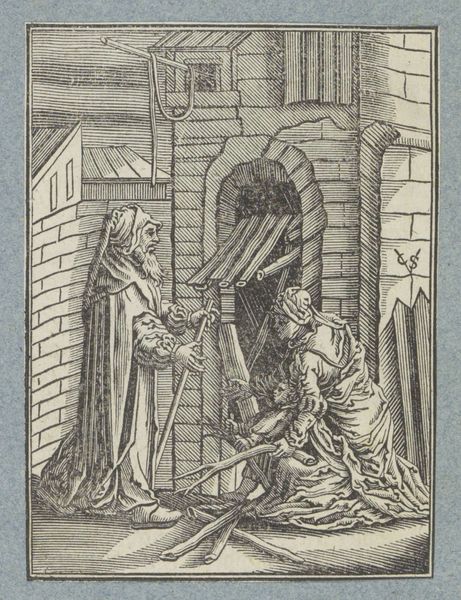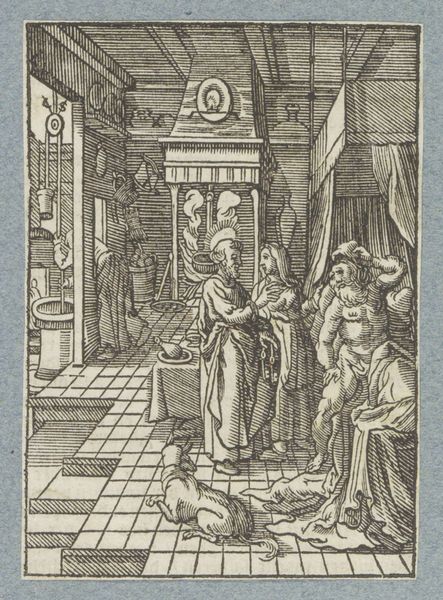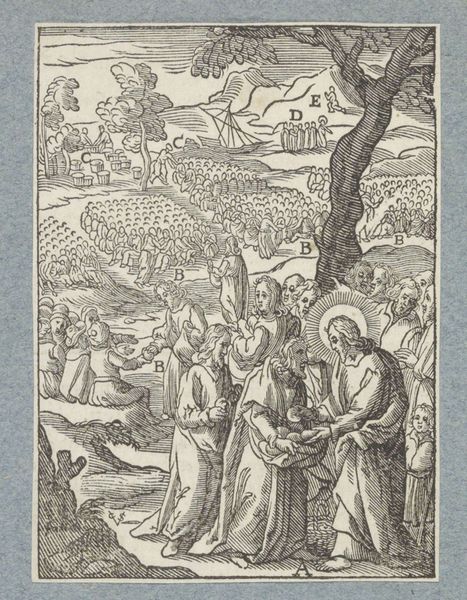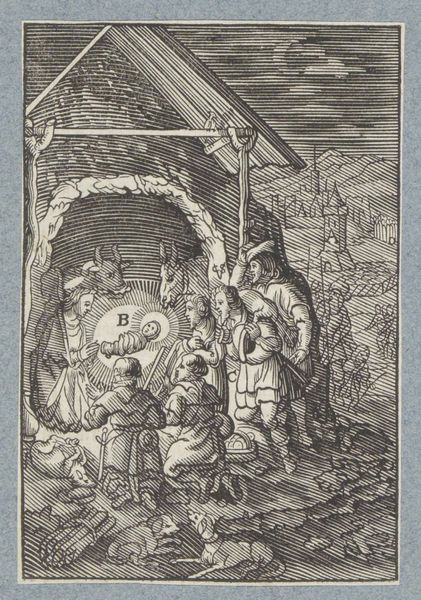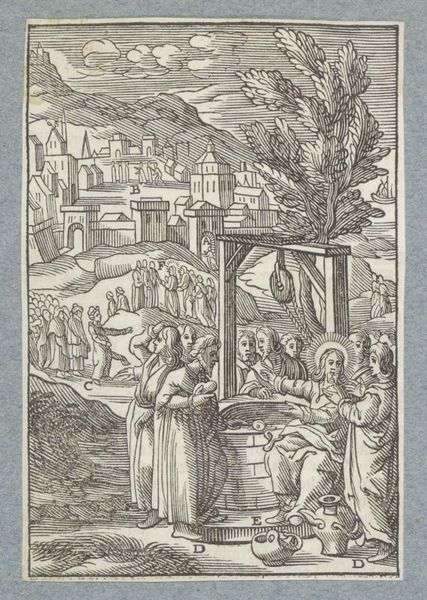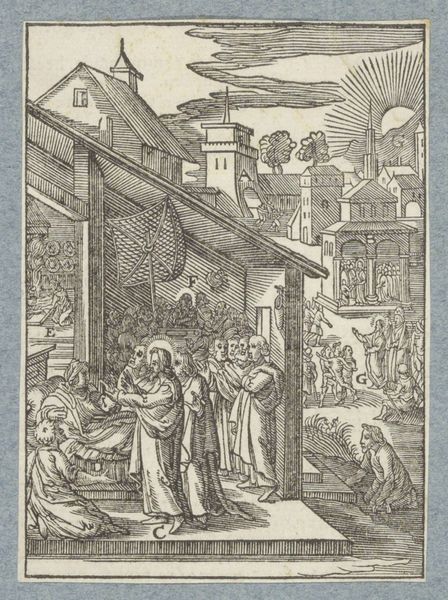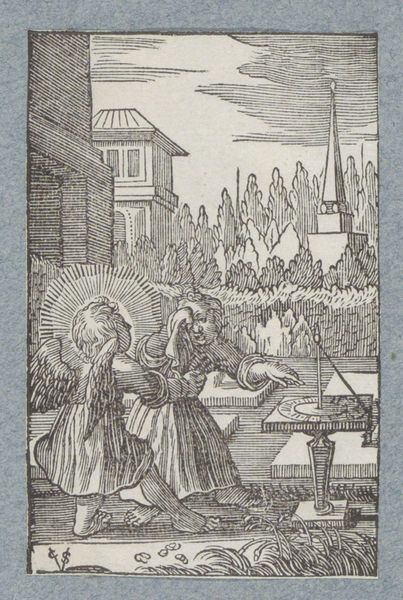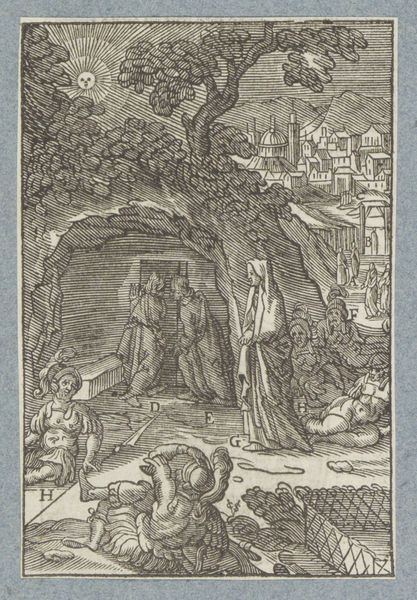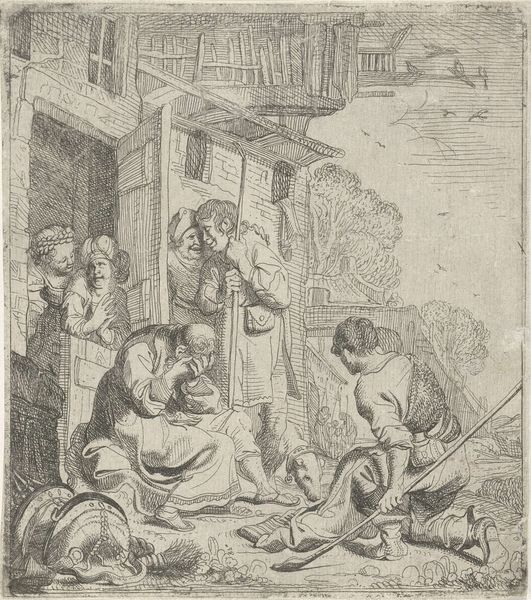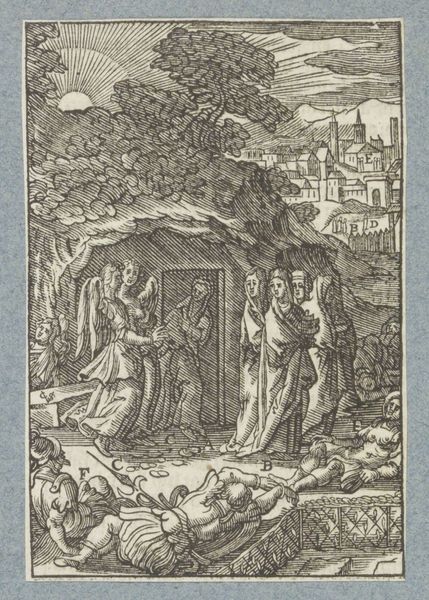
print, engraving
#
baroque
# print
#
figuration
#
line
#
history-painting
#
engraving
Dimensions: height 110 mm, width 79 mm
Copyright: Rijks Museum: Open Domain
Editor: We’re looking at Christoffel van Sichem II’s "Prophecy of Micah," an engraving dating back to around 1645-1646. The linework is so intricate, and the composition feels quite stage-like. What historical insights does this print offer? Curator: This print functions as a visual interpretation of religious doctrine that serves both spiritual and social purposes. The relatively accessible medium of engraving, particularly prints like this with strong linear qualities, made religious narratives widely available. Who do you think would consume imagery like this at the time? Editor: Perhaps a relatively literate middle class seeking affordable devotional imagery? What political factors influenced the choice to depict Micah's prophecy in this style and format? Curator: The visual style aligns with broader Baroque trends. The choice to represent Micah’s prophecy, situated at the historical intersection of religious upheaval and statecraft, places power structures under scrutiny. Remember, this was produced amidst significant religious and political tension, allowing the image to take part in wider commentary. How might it shape popular sentiment about authority? Editor: I suppose this challenges power through accessibility, democratizing biblical narratives and implicitly critiquing hierarchical authority structures by offering individuals direct engagement. It is fascinating to view art not only as art, but also as social commentary and a historical artifact. Curator: Precisely. By studying its form, function and reception, we reveal complex layers of political and religious power at play. Editor: That’s given me a lot to think about, seeing art as part of socio-political processes makes it all the more engaging.
Comments
No comments
Be the first to comment and join the conversation on the ultimate creative platform.
